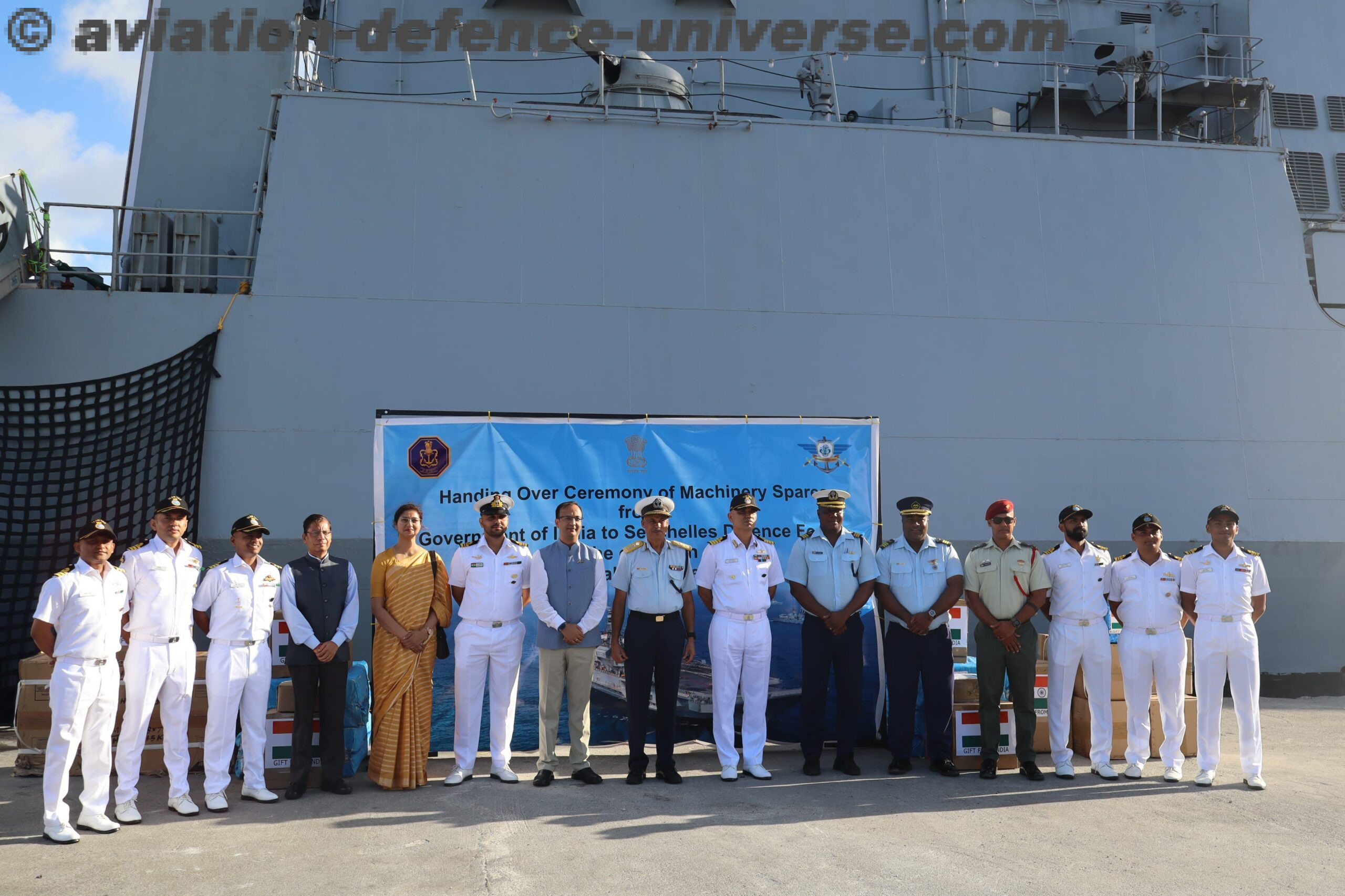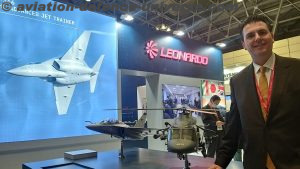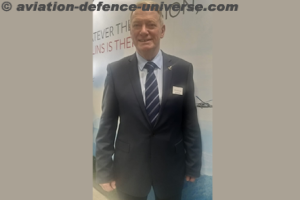- Leonardo is proud to have been working with Japan for over 40 years
- A key highlight is the collaboration under the Global Combat Air Programme (GCAP)
- GCAP will strengthen the partnerships between Leonardo and Japanese industry
Chiba, Japan. 14 March 2023. Leonardo is taking part in DSEI Japan (Tokyo, 15-17 March 2023 – stand H7-300), a major defence sector event in the Asia-Pacific region, and will exhibit technologies, products and systems for aerospace, defence and security. A key project being highlighted is GCAP, the Global Combat Air Programme, the mission to create a sixth-generation combat aircraft which will be at the heart of a future system of systems. This innovative project will see Leonardo play a core role within the transformational collaboration between Italy, Japan and the UK.
Leonardo has been present Japan for over 40 years, during which time more than 160 helicopters having been chosen by the Japan Maritime Self-Defense Force, the Japan Coast Guard and departments conducting firefighting and SAR (search and rescue) missions.
With an office in Tokyo, Leonardo is proud to have developed strong relationships with Japanese customers and industry over the years that go beyond the simple supply of products and service. Today, these close collaborations include partnerships and licensing agreements with Japanese industrial partners such as Kawasaki Heavy Industries, Mitsubishi Electric, Japan Radio Corporation and Japan Steel Works. In addition, Leonardo collaborates in-country with repair, maintenance and overhaul centres, distributors, resellers and promoters in order to provide rapid responses for customers in Japan.
At DSEI Japan, the focus of attention will be on GCAP, the programme to develop a sixth-generation fighter jet. This project, which will see Italy, Japan and the UK working together across both government and industry, includes Leonardo as a strategic partner. GCAP will see Leonardo reinforcing its strategic presence in Japan and represents one of the most forward-looking international projects for the aerospace, defence and security industry.
Guglielmo Maviglia, Director Global Combat Air Programme, Leonardo, said: “GCAP is the standard bearer for the technological revolution that will characterise our sector over the next fifty years. It will protect and strengthen the technological and industrial sovereignty of the partner countries, ensure prosperity, safeguard distinctive skills, create employment and boost competitiveness. It will be a great challenge, because the aircraft will form the heart of a multi-domain system of systems, with the core platforms and other assets interconnected as part of an integrated whole. Elements of the system will range from unmanned platforms to advanced weapons, able to communicate across the five domains: land, sea, air, cyber and space”.
One of the key roles Leonardo is playing within the GCAP programme relates to the development of sixth generation tactical sensing. This domain is called ISANKE & ICS (Integrated Sensing and Non-Kinetic Effects & Integrated Communications System). Leonardo in the UK and Italy is developing ISANKE & ICS in partnership with Japan’s Mitsubishi Electric and Italy’s Elettronica. The new approach transitions from the traditional combat air model of individual airborne sensors to instead provide a fully integrated sensing, fusion and self-protection capability that draws on a spider’s web of sensing and effecting nodes across each platform.
Meanwhile, in Leonardo’s “Battle Lab”, the study and evaluation of the future sixth-generation air combat system is already underway, with enabling technologies being developed and tested. To support this, Leonardo has created a cutting-edge environment that combines physical systems, synthetic and immersive reality. The aim is to validate new operational concepts well before a demonstrator or flying prototype will become available. The digital simulator reproduces what a sixth-generation fighter cockpit could look like, where only the stick and throttle of an aircraft are “physical” and everything is virtual/using augmented reality. This revolutionary interface will provide the pilot with an immersive experience when operating the fighter of the future.
Also on show, Leonardo’s role in aircraft development and training services is being represented by the M-346, an aircraft that enables trainee pilots to develop the knowledge, skills and procedures to transition to modern combat aircraft. The M-346 is at the centre of the new International Flight Training School (IFTS), created by Leonardo and the Italian Air Force and chosen by the Japan Air Self-Defence Force to train its student pilots. An internationally recognised centre of excellence, the IFTS has also been chosen by the air forces of Qatar, Germany and Singapore – among others – and selected as the flagship campus for the NATO Flying Training in Europe (NFTE) project. The M-346 platform is a fully integrated advanced training system. It includes a complete system of simulators and ground training devices, as well as a fully operational Live, Virtual, and Constructive (LVC) environment developed in-house by Leonardo. The M-346 prepares future combat air pilots to face the most complex and demanding operational scenarios they will face while operating current and future generation fighters.
Representing Leonardo’s range of helicopters at DSEI Japan is the AW139M multi-mission helicopter, the military version of the well-known AW139. It is the ideal platform for government and military missions, in all weather and environmental conditions. Combining advanced technology and high power, the AW139M performs a wide range of missions including theatre support, tactical troop transport, logistics support, close support, firefighting, command and control, medical evacuation, combat search and rescue (CSAR), maritime patrol and homeland security.
Leonardo is a global player in the defence electronics sector and will be promoting a number of advanced products relevant to the Asia Pacific market at DSEI Japan. One key capability is the BriteCloud active expendable decoy. BriteCloud is unique in the combat air countermeasure market, packing latest-generation DRFM jamming technology into a compact expendable that can be launched from standard countermeasure dispensers. Unlike traditional chaff and flares, BriteCloud employs a sophisticated on-board electronic warfare capability designed to counter radar-guided threats. Also, in the field of countermeasures, Leonardo’s Miysis DIRCM (Directed Infra-Red Counter Measure) is proven to provide gold-standard protection against infrared (IR) ‘heat-seeking’ missiles, such as those launched by Man-Portable Air Defence Systems (MANPADS). Drawing on the company’s decades of DIRCM heritage, the Miysis system’s speed and energy enables it to defeat multiple, simultaneous incoming missiles. Multiple NATO and non-NATO users have selected Miysis for its ability to defeat latest-generation threats.
Also, on display are fixed and mobile multi-domain radars (air, land, sea) incorporating AESA (Active Electronically Scanned Array) technology, used for surveillance and defence tasks. These radars can detect, classify and track multiple targets simultaneously.
IFF (Identification Friend/Foe) systems allow crew to recognize friendly forces in real time, through an exchange of encrypted signals, and identify potential threats. This technology, in which Leonardo is a global leader, has already been chosen for the Japan Ground Self Defense Forces. Finally, Leonardo will be presenting the Vulcano family of ammunition at DSEI Japan, including the 155mm calibre land version and 127mm naval variant. The unguided munition follows a conventional ballistic trajectory with a range of up to 70km, while the range of the guided versions reaches 100km.





























































































































